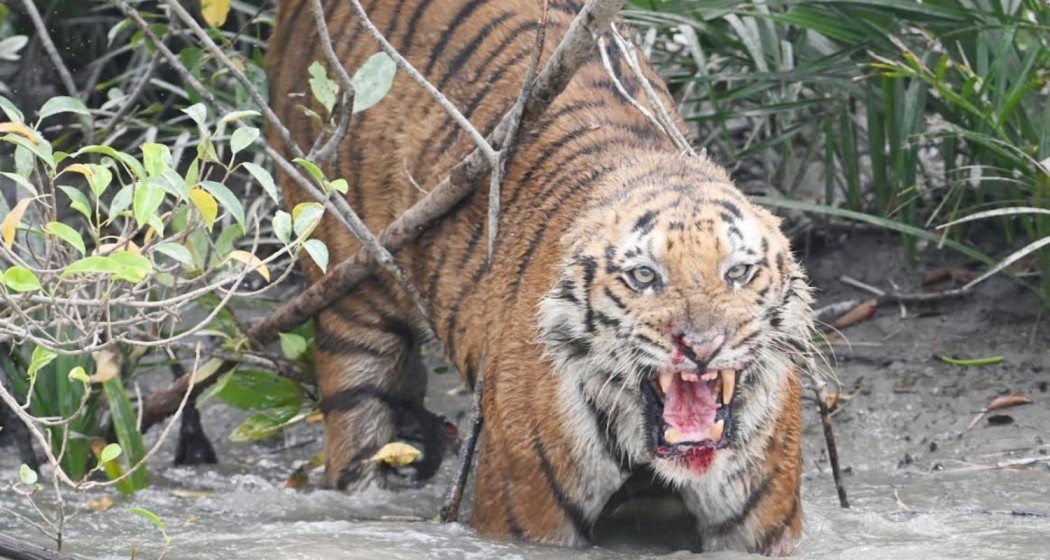After a 12-year gap, the West Bengal Forest Department launched a new survey this year in the Sunderbans—the world's largest mangrove forest—to estimate the crocodile population, one of the top predators in the delta.
The survey revealed that the crocodile count has increased to over 200, up from around 140 in 2012. According to a forest official, this surge has led to more frequent conflicts between the Royal Bengal Tiger and the saltwater crocodile.
When the last death of a tiger because of a crocodile attack that took place in 2011 in the region, the forest department spotted several big cats with injuries in the recent past caused by crocodile attacks.
“This year’s tiger census counted the presence of 103 Royal Bengal Tigers in the mangrove region which was 86 in the previous session. We suspected there might be a rise in the saltwater crocodile population as our teams started spotting injured tigers frequently. This was why we decided to initiate the move to count crocodile population in the region,” said a forest department official.

In Bengal's mangrove region, within the Bay of Bengal, it's not the tiger—land’s apex predator—but the crocodile that reigns over the brackish waters.
Saltwater crocodiles possess the strongest bite force of any living animal, nearly four times more powerful than that of a tiger or lion. In 2011, a crocodile killed a tiger at the Dobanki camp in the Sunderbans Tiger Reserve.
A small team on boats searched for physical sightings along 900 km of waterways and riverbanks. Eight of our 22 teams were assigned to the south 24 Parganas forest division, while 14 were assigned to the Sunderbans Tiger Reserve (STR). According to a forest department official, each team included both representatives from the local wildlife NGOs and staff from the forest department.
“Each boat covered 40 km in two days. The data, compiled on the basis of the physical sightings and the health of the habitat, is being prepared now. We will soon release a final report,” said the official.
Unlike the tiger census, which relies on camera-trapped images processed through software using statistical tools to estimate population numbers, the crocodile population in the Sunderbans is assessed through physical sightings, sign surveys, and habitat evaluation. Winter is considered the best time for a crocodile survey, as they are often seen basking in the sun along riverbanks and creek edges.
According to sources in the Forest Department, the estimated population of saltwater crocodiles in the Sunderbans Biosphere Reserve ranges between 204 and 234 individuals.
“Since the sighting numbers were comparatively less due to unfavourable weather conditions during the exercise, the estimated number can be projected with a higher degree of confidence,” said a forest official.
The entire area, around 900 km, that was scanned has been divided into large, small and medium habitats. “Based on the physical sightings, we will come to a basic index of the number of crocodiles per kilometre in each habitat.
“That data will be extrapolated to the larger Sunderbans habitat which is spread over 4,000 sqkm in Indian side. The actual sightings across 900 km should be around 60 per cent of the total population,” said an official of the STR.
There is little chance of a crocodile being counted twice because like tigers, crocodiles are also very territorial, he added.


